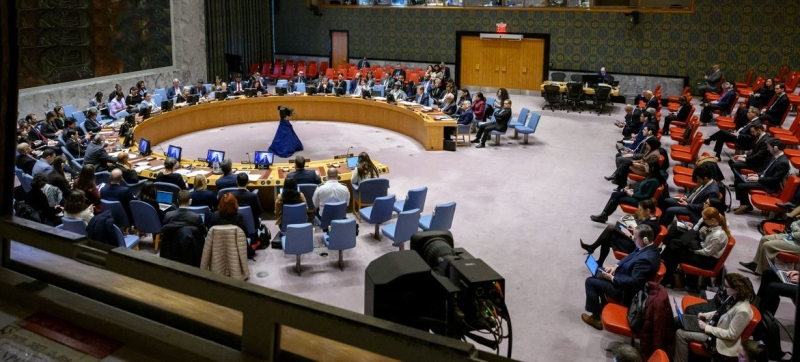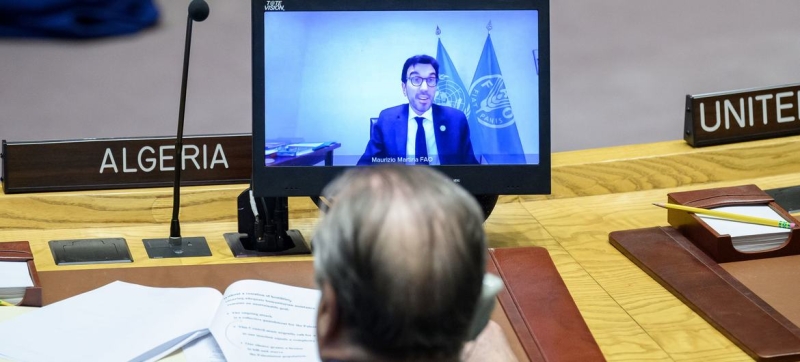
UN Security Council meeting on Gaza. UN Security Council meeting on Gaza: mass famine in the sector is almost inevitable Peace and Security
Since the outbreak of hostilities following the Hamas attack on Israel on October 7 last year, the UN has repeatedly warned of the potentially detrimental impact of the conflict on food security in Gaza, especially given the high level of poverty among the population – a result 16-year blockade. UN Deputy Emergency Relief Coordinator Ramesh Rajasingham stated this while speaking at a meeting of the Security Council on Tuesday.
Last December, it was predicted that Gaza’s entire population of 2.2 million would face severe food shortages by February 2024.
“All possibilities” for worsening the situation
“And here we are at the end of February, with at least 576,000 people – a quarter of Gaza’s population – on the brink of famine,” said Ramesh Rajasingham. – One in six children under two years of age in northern Gaza suffers from acute malnutrition and wasting. Almost the entire population of the sector is forced to rely on extremely meager humanitarian food aid to survive. Unfortunately, as bleak as the picture we see today is, there is every opportunity for it to get worse.”
Because Gazans cannot now rely on markets and other normal sources of food, aid remains practically their only source of livelihood, Rajasingham continued. Yet the humanitarian community faces insurmountable obstacles to getting even the most minimal supplies into Gaza, let alone the broader response needed to prevent famine.
UN Efforts and partners, according to Ramesh Rajasingham, continue to be hampered by checkpoint closures, severe restrictions on movement, denials of access, onerous screening procedures, communication restrictions, as well as road damage and unexploded ordnance.
The situation has become even more difficult following the suspension of funding to the United Nations Relief Agency for Palestine Refugees in the Near East (UNRWA). An estimated 1.7 million people live in UNRWA-run shelters – more than three-quarters of Gaza’s population. Last week, the head of the agency told the General Assembly that UNRWA’s activities in the region would be significantly limited starting in March. there is a risk of their spreading to overpopulated areas in southern Gaza. Therefore, we reiterate our call for a ceasefire,” said Ramesh Rajasingham. “If nothing is done, we fear that widespread famine in Gaza will be virtually inevitable.”
FAO: Gaza’s food system is destroyed
Maurizio Martina, Deputy Director-General of the Food and Agriculture Organization of the United Nations (FAO), painted a grim picture in Gaza: from a destroyed fishing sector that provided livelihoods for more than 100,000 people in the strip, to mass deaths of livestock from airstrikes and water shortages and feed.

Maurizio Martina (on screen), Deputy Director-General of the UN Food and Agriculture Organization (FAO), briefs a meeting of the UN Security Council.
As of February 15, 46.2 percent of all arable land was assessed as damaged, with agricultural infrastructure, sheep and dairy farms destroyed. In Gaza, more than a quarter of wells and 339 hectares of greenhouses were also destroyed. The hostilities have negatively impacted the olive and citrus harvests, which are an important source of income for Gazans.
Ending hostilities and restoring the humanitarian space for multi-sectoral assistance and service delivery are “important first steps in eliminating the risk of famine,” Martina said. stable humanitarian access throughout the Gaza Strip and to everyone who needs life-saving assistance,” he said.
In addition, cross-border water pipelines, telecommunications and supply of electricity, he added.
WFP: famine threatens more than 500,000 people
World Food Program (WFP) Deputy Executive Director Karl Skau has warned of the real prospect of hunger in the sector by May this year. According to him, at least half a million people will be at risk. Already, nearly all of Gaza’s 2.2 million people are in need of food assistance.
“Gaza has the worst rate of child malnutrition in the world,” Skau said. “Acute malnutrition affects one in six children under two years of age.”
Gaza has the worst rate of child malnutrition in the world
According to the deputy head of the WFP, the organization is ready to urgently expand and increase the scale of its humanitarian operations as soon as a ceasefire agreement is reached.
“We need safe conditions for humanitarian workers to work, the opening of the port of Ashdod and the Karni checkpoint, an effective notification system for the delivery of humanitarian aid and a stable communications network,” Skau said. “If nothing changes, famine in northern Gaza will be inevitable.”
According to him, the WFP and other UN humanitarian agencies are not able to regularly supply people with food in sufficient quantities who are in dire need of it.
“It is important to prevent famine, and this requires not only delivering food, but also restoring basic services, including health care, electricity, water and sanitation,” Skau said , adding that today UNRWA is the only organization capable of monitoring and managing all this vital infrastructure in Gaza.
